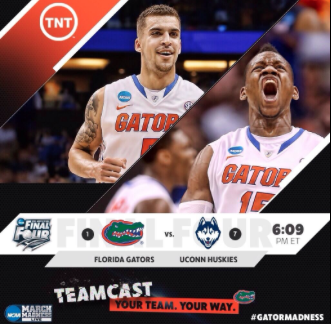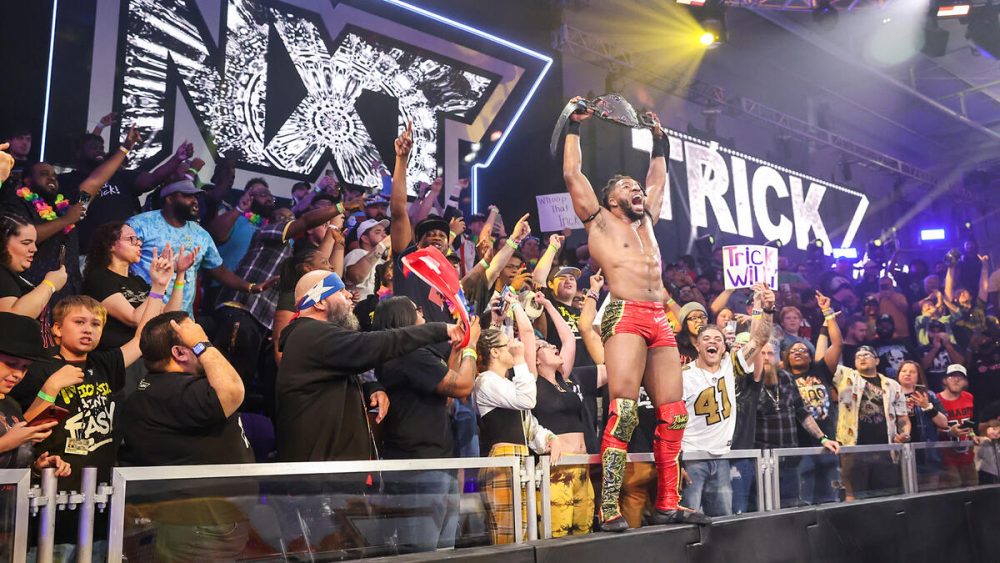We all had a good laugh poking fun at individuals angry at Turner Sports for their biased telecasts on TNT and truTV. Unbeknownst to those fans, they were missing the neutral national telecast with Jim Nantz, Greg Anthony, and Steve Kerr on TBS. It was so absurd that Charles Barkley had to call out those fans to tell them that the broadcasts were supposed to be biased towards one team.
Perhaps Turner Sports shares some of the responsibility for fans being not knowing where to turn.. and perhaps they overestimated the ability of the public to latch on to the idea. In spite of the giant “Teamcast” graphics that appeared, there were several reasons why fans may have been confused. Ratings are not yet out for the individual channels of the Teamcast, but one might think because of the uncertainty the ratings will be spread more evenly than ESPN’s BCS Megacast. That night, 98% of viewers stuck with the main ESPN feed.
But while ESPN’s Megacast offered distinct and diverse feeds that were very different from one another, Turner’s Teamcast productions were quite similar to the main national feed. The production was just as good, the CBS/Turner graphics were the same, and for the most part it looked like all of the other NCAA Tournament broadcasts from this year.
The only real difference came in the nature of the “home” telecasts on TNT and truTV. Local announcers were used, stats and camera shots kept the focus on the “home” team, and tweets were shown from celebrities related to the schools. Aside from employing David Steele and showing tweets from Dara Torres, there wasn’t much separating the Florida Gators Teamcast from the national feed. The most notable moment came when former Kentucky player and Wildcats Teamcast analyst Rex Chapman had a delightful moment of self-awareness. He said, “I don’t want to sound like a complete homer… I guess I do want to sound like a complete homer.”
Turner’s Teamcasts were targeted towards fans of the four teams competing in North Texas at the Final Four, but one wonders what was on offer beyond that. As opposed to the BCS Megacast, which offered viewers different ways of seeing the game, the Teamcasts were all about how you heard the game. The biggest innovation of the Teamcasts were the announcing teams using “we” instead of “they.” Is that enough of an interesting dynamic to warrant its continued use?
Maybe. By design, the Teamcast idea can only have a limited appeal to all fans watching the game. Saturday night, you were probably going to watch the Badgers Teamcast and Wayne Larrivee’s enthusiastic calls if you were A) a Wisconsin fan or B) were counting on them to win your bracket pool. This, by nature, restricts the scope of what the Teamcasts are able to do and how revolutionary they might be.
Also, the fact that you were asking four different announcing teams cobbled together for this one night meant the announcing teams approached their duties in different ways. The Connecticut Teamcast was more down the middle than Kentucky’s was, for instance. Moving forward, what’s the right note to hit for these announcers and their homer calls? Do we want to see a bunch of Hawk Harrelsons and Dave Laphams on the national stage or is there a balance that needs to be struck between pom-pom waving and a broadcast that can speak to a wider audience? I’ll be honest, had it not been for covering the Teamcasts as a story, I probably would have avoided TNT and truTV and stuck to the national feed all evening.
Networks coming up with broadcast innovations are always a welcome thing to give fans more options for sporting events. Anything that causes sports broadcasters to think outside the box and push conventional boundaries is a positive. In that regard, the Teamcasts were a success for Turner Sports.
However, because of its limited appeal to specific fanbases, the Teamcast idea seems to be more of a novelty that may be dusted off in the future for big events instead of the next big thing in sports broadcasting.








Comments are closed.